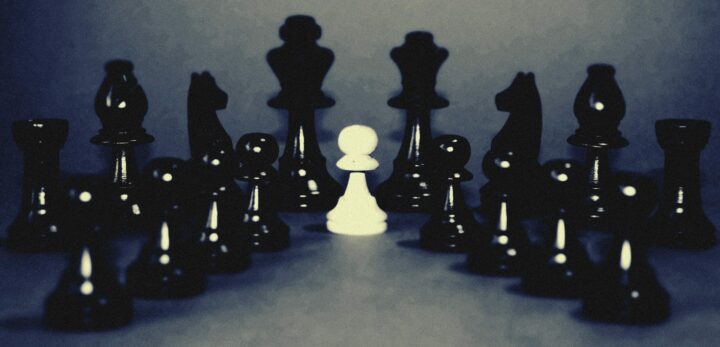In the intricate game of chess, every piece plays a crucial role, each with its own unique moves and capabilities. Among the army of chess pieces, the humble pawn often takes the spotlight for its strategic importance in shaping the course of the game.
But have you ever wondered just how many moves a pawn can make on the chessboard? Prepare to be amazed as we delve into the captivating world of pawn mobility and explore the hidden potential behind these seemingly unassuming game-changers.
What is the primary movement of a pawn?
Pawns are the workhorses of the chessboard, and their primary movement is straightforward yet crucial. They are allowed to move one square forward, toward the opponent’s side of the board. This small step might seem insignificant, but it sets the stage for intricate maneuvers and grand strategies that can turn the tide of the game.
Can a pawn move backward in chess?
Unlike some other chess pieces, pawns cannot move backward. They are bound by the rule of moving forward on the chessboard. This limitation adds an extra layer of strategy and forces players to think carefully about the positioning and protection of their pawns, as retreating is not an option for these steadfast foot soldiers.
How far can a pawn advance on its first move?

The first move of a pawn carries a special privilege, allowing it to advance not just one but two squares forward. This burst of initial speed grants pawns the opportunity to quickly establish a presence on the board and seize valuable territory. However, it’s important to choose this double-step wisely, as it cannot be repeated in subsequent moves.
Is there a limit to the number of squares a pawn can move?
Pawns typically move one square at a time, but there is a limit to their mobility. After their initial double-step, pawns revert to advancing only one square per move. This restriction emphasizes the need for careful planning and strategic placement, as pawns must navigate the chessboard with precision and foresight.
Are there any special circumstances where a pawn can move more than one square?
While pawns generally adhere to the rule of moving one square at a time, there is a rare exception known as en passant. This intriguing rule allows a pawn to make a daring leap forward of two squares under specific conditions.
It occurs when an opponent moves their pawn two squares forward from its initial position, providing an opportunity for an adjacent pawn to capture it en passant as if it had only moved one square.
Can a pawn capture an opponent’s piece while moving forward?
Pawns possess a unique attacking style that sets them apart from other chess pieces. Ordinarily, pawns capture the opponent’s pieces by moving diagonally to an adjacent square.
However, there is an exception when it comes to their own advancement. Pawns cannot capture enemy pieces directly in front of them, forcing them to seek alternative paths to victory.
What happens when a pawn reaches the opposite end of the board?
When a pawn reaches the farthest rank on the opponent’s side of the board, it undergoes a remarkable transformation. The pawn can be promoted to any other chess piece, excluding another pawn or a king. This exhilarating moment of promotion grants players the opportunity to enhance their pawn’s potential and introduce a powerful new force to the battlefield.
Are there any restrictions on a pawn’s promotion?

While the promotion of a pawn opens up exciting possibilities, there are certain limitations to keep in mind. Pawns can only be promoted to a piece that is not already present on the board. Additionally, the choice of promotion is entirely up to the player, and they can select the chess piece that best suits their strategic objectives.
How does a pawn capture other pieces?
When it comes to capturing other pieces, pawns have a unique approach. They capture the opponent’s pieces by moving diagonally to an adjacent square.
This diagonal movement is a distinctive feature of pawns and adds an element of surprise and cunning to their attacks. Careful placement and timing are crucial for executing successful pawn captures.
Can pawns move diagonally?
Pawns primarily move forward, but their attacking prowess shines through their diagonal movement. Pawns capture the opponent’s pieces by moving diagonally to an adjacent square.
This diagonal maneuver allows pawns to exploit gaps in the opponent’s defense and surprise adversaries with their unconventional style. By mastering the art of diagonal movement, players can unlock the full potential of their pawns on the chessboard.
What is en passant, and how does it affect a pawn’s movement?
Prepare to be amazed by the fascinating chess maneuver known as en passant. This unique rule comes into play when an opponent moves their pawn two squares forward from its starting position.
In response, an adjacent pawn gains the extraordinary ability to capture that pawn as if it had only moved one square forward. En-passant opens up a world of tactical possibilities, allowing players to exploit their opponent’s positioning and strike with unexpected precision.
Can pawns move sideways or laterally?
In the dynamic game of chess, pawns possess incredible mobility, but lateral movement is not among their repertoire. Pawns are exclusively designed to move forward, focusing on advancing their position and capturing enemy pieces diagonally.
While sidestepping might be off-limits for pawns, their forward-thinking nature grants them strategic importance in shaping the outcome of the game.
How does the initial pawn setup affect their potential moves?

The arrangement of pawns at the start of a chess game is more than just a symmetrical aesthetic. It plays a pivotal role in shaping the potential moves of these formidable chess pieces.
The initial setup determines the options available for each pawn’s first move, including the opportunity for a double-step advancement. This careful placement establishes the foundation for future strategies and influences the overall flow of the game.
Can pawns capture pieces on adjacent files?
While pawns excel at diagonal captures, their prowess is confined to their own file on the chessboard. Pawns are not able to capture pieces directly on adjacent files.
This limitation adds an extra layer of complexity to the game, as players must strategize and maneuver their pawns with precision to create opportunities for capturing enemy pieces.
Are there any limitations to a pawn’s movement based on its position on the board?
| Aspect | Standard Movement | First Move Advantage |
|---|---|---|
| Forward Movement | 1 square | 2 squares |
| Capturing | Diagonally adjacent squares | Diagonally adjacent squares |
| En passant | N/A | Possible under specific conditions |
| Sideways/Lateral Movement | Not possible | Not possible |
| Promotion | N/A | Possible upon reaching the opposite end of the board |
In the captivating world of chess, the position of a pawn on the board can significantly impact its movement. Pawns near the starting rank have the potential for a double-step advancement, while those closer to the enemy’s territory are limited to moving one square at a time.
Additionally, a pawn’s ability to promote and transform into a different piece is contingent on reaching the opposite end of the board. These positional constraints add depth and strategic complexity to the game, requiring players to adapt their pawn movements based on their current location on the chessboard.
Last words
In conclusion, the seemingly unassuming pawn in chess holds a wealth of strategic possibilities and surprises. From its primary forward movement to its ability to capture diagonally, the pawn plays a crucial role in shaping the game’s outcome.
The special rules of en passant and the limitations on sideways movement add an extra layer of intrigue and challenge. The initial pawn setup and the pawn’s position on the board further influence their potential moves, requiring players to think strategically and adapt their tactics accordingly.
So, the next time you engage in a game of chess, remember to embrace the power of pawns and unlock their hidden potential on the chessboard.




